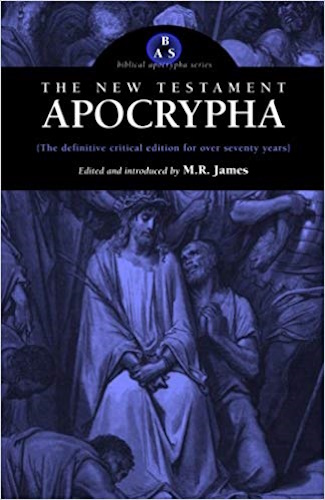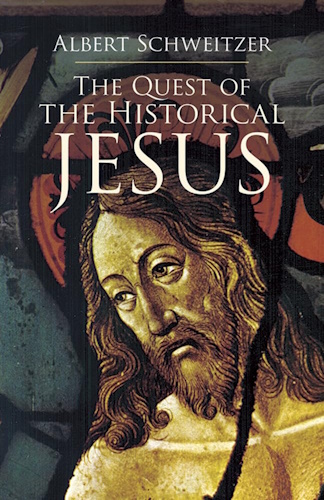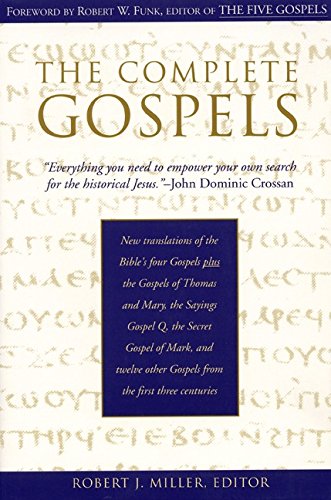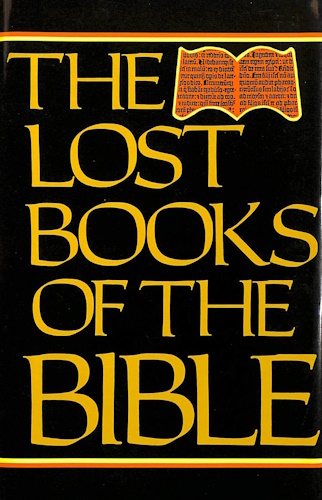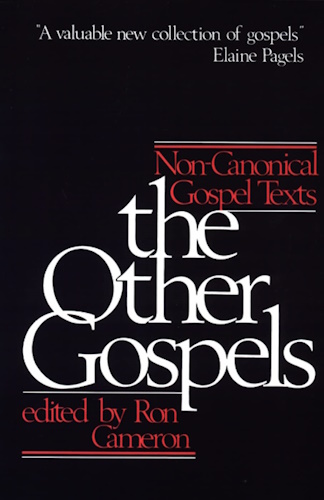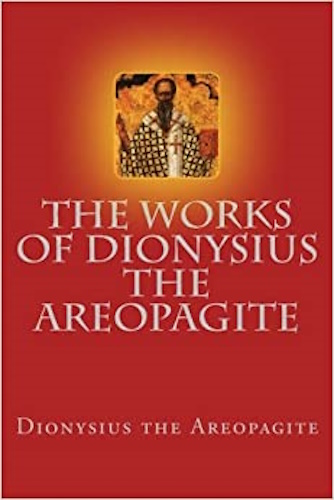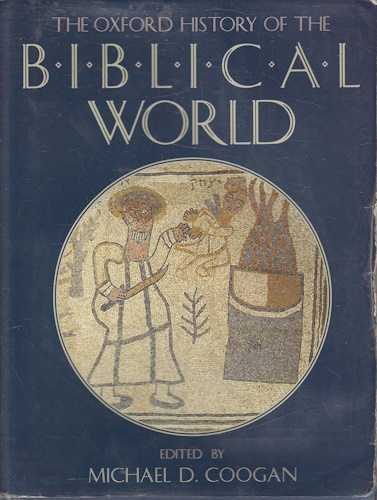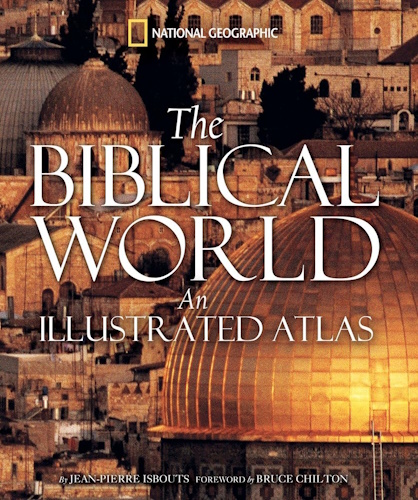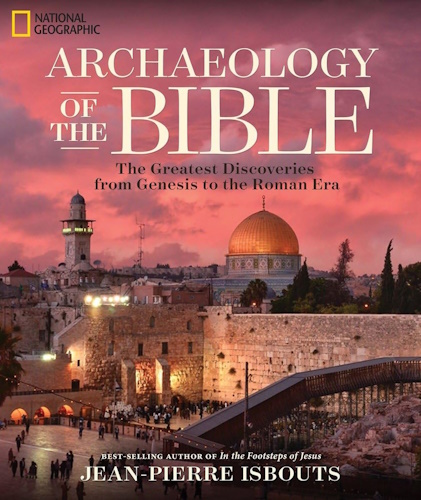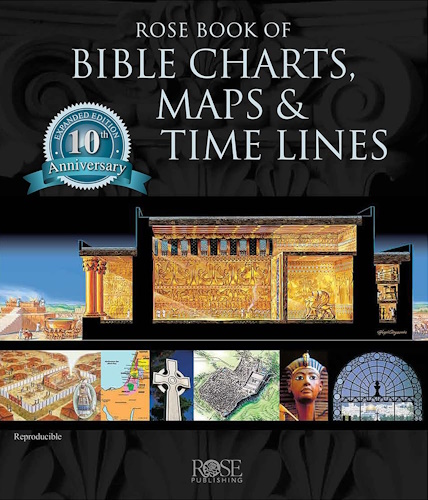
The works of Dionysius the Areopagite
Ecclesiastical Hierarchy
Caput VII
I. Concerning things performed over those fallen asleep.
Section I.
These things having been defined, I think it necessary also to describe the things religiously performed by us over those who have fallen asleep. For neither is this also the same between the holy and the unholy; but, as the form of life of each is different, so also, when approaching death, those who have led a religious life, by looking steadfastly to the unfailing promises of the Godhead (inasmuch as they have observed their proof, in the resurrection proclaimed by it), come to the goal of death, with firm and unfailing hope, in godly rejoicing, knowing that at the end of holy contests their condition will be altogether in a perfect and endless life and safety, through their future entire resurrection266. For the holy souls, which may possibly fall
page 146
during this present life to a change for the worse, in the regeneration, will have the most Godlike transition to an unchangeable condition. Now, the pure bodies which are enrolled together as yoke-fellows and companions of the holy souls, and have fought together within their Divine struggles in the unchanged steadfastness of their souls throughout the divine life, will jointly receive their own resurrection; for, having been united with the holy souls to which they were united in this present life, by having become members of Christ, they will receive in return the Godlike and imperishable immortality, and blessed repose. In this respect then the sleep of the holy is in comfort and unshaken hopes, as it attains the goal of the Divine contests.
Section II.
Now, amongst the profane, some267 illogically think to go to a non-existence; others268 that the bodily blending with their proper souls will be severed once for all, as unsuitable to them in a Divine life and blessed lots, not considering nor being sufficiently instructed in Divine science, that our most Godlike life in Christ has already begun269. But others270 assign to souls union with other bodies, committing271, as I think, this injustice to them, that, after (bodies) have laboured together with the godly
page 147
souls, and have reached the goal of their most Divine course, they relentlessly deprive them of their righteous retributions. And others272 (I do not know how they have strayed to conceptions of such earthly tendency) say, that the most holy and blessed repose promised to the devout is similar to our life in this world, and unlawfully reject, for those who are equal to the Angels, nourishments appropriate to another kind of life. None of the most religious men, however, will ever fall into such errors as these; but, knowing that their whole selves will receive the Christ-like inheritance, when they have come to the goal of this present life, they see more clearly their road to incorruption already become nearer, and extol the gifts of the Godhead, and are filled with a Divine satisfaction, no longer fearing the fall to a worse condition, but knowing well that they will hold firmly and everlastingly the good things already acquired. Those, however, who are full of blemishes, and unholy stains, even though they have attained to some initiation, yet, of their own accord, have, to their own destruction, rejected this from their mind, and have rashly followed their destructive lusts, to them when they have come to the end of their life here, the Divine regulation of the Oracles will no longer appear as before, a subject of scorn273, but, when they have looked with different eyes upon the pleasures of their passions destroyed, and when they have pronounced
page 148
blessed the holy life from which they thoughtlessly fell away, they are, piteously and against their will, separated from this present life, conducted to no holy hope, by reason of their shameful life274.
Section III.
Now, whilst none of these attain the repose of the holy men, he himself, when coming to the end of his own struggles, is filled with a holy consolation, and with much satisfaction enters the path of the holy regeneration. The familiar friends, however, of him who has fallen asleep, as befits their divine familiarity and fellowship, pronounce him blessed, whoever he is, as having reached the desired end crowned with victory, and they send up odes of thanksgiving to the Author of victory, praying also that they may reach the same inheritance. Then they take him and bring him to the Hierarch, as to a bequest of holy crowns; and he right gladly receives him, and performs the things fixed by reverend men, to be performed over those who have piously fallen asleep.
II. Mysterion over those who have religiously fallen asleep.
The Divine Hierarch collects the reverend Choir, and if the person who has fallen asleep were of the sacerdotal rank, he lays him down before the Divine Altar, and begins with the prayer and thanksgiving
page 149
to God; but if he belonged to the rank of the chaste Monks, or the holy people, he lays him down near the hallowed sanctuary, before the sacerdotal entrance. Then the Hierarch finishes the prayer of thanksgiving to God; and next, the Leitourgoi, after reading the unfailing promises concerning our holy resurrection, contained in the Divine Oracles, reverently chant the odes of the same teaching and power, from the Oracles of the Psalter275. Then the first Leitourgos dismisses the catechumens, and calls aloud the names of the holy people, who have already fallen asleep; amongst whom he deems the man, who has just terminated his life, worthy of mention in the same rank, and urges all to seek the blessed consummation in Christ; then the Divine Hierarch advances, and offers a most holy prayer over him, and after the prayer both the Hierarch himself salutes the defunct, and after him, all who are present. When all have saluted, the Hierarch pours the oil upon the fallen asleep, and when he has offered the holy prayer for all, he places the body in a worthy chamber, with other holy bodies of the same rank.
III. Contemplation.
Section I.
Now, if the profane should see or hear that these things are done by us, they will, I suppose, split with laughter, and commiserate us on our, folly. But
page 150
there is no need to wonder at this. For, as the Oracles say, "If they will not believe, neither shall they understand276." And as for us, who have contemplated the spiritual meaning of the things done, whilst Jesus leads us to the light, let us say, that, not without reason, does the Hierarch conduct to, and place the man fallen asleep, in the place of the same rank; for it shews reverently, that, in the regeneration, all will be in those chosen inheritances, for which they have chosen their own life here277. For example, if any one led a Godlike and most holy life here, so far as the imitation of God is attainable by man, he will be, in the age to come, in divine and blessed inheritances; but if he led a life inferior to the divine likeness in the highest degree, but, nevertheless, a holy life, even this man will receive the holy and similar retributions. The Hierarch, having given thanks for this Divine righteousness, offers a sacred prayer, and extols the worshipful Godhead, as subjugating the unjust and tyrannical power against us all, and conducting us back to our own most just possessions (or judgments).
Section II.
Now, the Chants and Readings of the supremely Divine promises are explanatory of the most blessed inheritances, to which those, who have attained a Divine perfection, shall be eternally appointed, and
page 151
descriptive of him who has religiously fallen asleep, and stimulative of those, who are still living, to the same perfection.
Section III.
Observe, however, that not all the ranks under purification are customarily dismissed, but only the catechumens are expelled from the holy places, for this class is entirely uninitiated in every holy Rite, and is not permitted to view any of the religious celebrations, great or small, inasmuch as it has not participated in the faculty of contemplating the holy mysteries, through the Birth from God, which is Source and gift of light. The rest, however, of the ranks under purification, have already been under instruction in sacred tradition; but, as they have foolishly returned to an evil course it is incumbent to complete their proper elevation in advance, and they are reasonably dismissed from the supremely Divine contemplations and communions, as in holy symbols; for they will be injured, by partaking of them unholily, and will come to a greater contempt of the Divine Mysteries and themselves.
Section IV.
Naturally, however, they are present at the things now done, being clearly taught by seeing both the fearlessness of death amongst us, and the last honour of the saints extolled from the unfailing Oracles, and that the sufferings threatened to the unholy
page 152
like themselves will be endless; for it will perhaps be profitable for them to have seen him, who has religiously finished his course, reverently proclaimed by the public proclamation of the Leitourgoi, as being certainly companion of the Saints for ever. And, perchance, even they will come to the like aspiration, and will be taught from the science of the Liturgy, that the consummation in Christ is blessed indeed.
Section V.
Then the Divine Hierarch, advancing, offers a holy prayer over the man fallen asleep. After the prayer, both the Hierarch himself salutes him, and next all who are present. Now the prayer beseeches the supremely Divine Goodness to remit to the man fallen asleep all the failings committed by reason of human infirmity, and to transfer him in light and land of living, into the bosom of Abraham, and Isaac, and Jacob: in a place where grief and sorrow and sighing are no more. It is evident, then, as I think, that these, the rewards of the pious, are most blessed. For what can be equal to an immortality entirely without grief and luminous with light. Especially if all the promises which pass man's understanding, and which are signified to us by signs adapted to our capacity, fall short, in their description, of their actual truth. For we must
page 153
remember that the Logion is true, that "Eye hath not seen, nor ear heard, neither hath entered into the heart of man to conceive, the things which God hath prepared for them that love Him." "Bosoms" of the blessed Patriarchs, and of all the other pious men, are, in my judgment, the most divine and blessed inheritances, which await all godly men, in that consummation which grows not old, and is full of blessedness.
Section VI.
But thou mayst, perhaps, say that these things are correctly affirmed by us, indeed, but want to know for what reason the Hierarch beseeches the supremely Divine Goodness, for the remission of the faults committed by the man fallen asleep, and his most glorious inheritance, amongst godly men of the same rank. For, if every one shall receive, by the Divine justice, equivalents for what he has done in the present life, whether it be good or different, and the man fallen asleep has finished his own activities in this present life, from what prayer offered by the Hierarch will he be transferred to another inheritance, than that due to and equivalent for his life here? Now, well do I know, following the Oracles, that each one will have the inheritance equivalent; for the Lord says, he has closed respecting him, and each one shall receive the things done in his body according to that he hath done, whether it
page 154
be good, or whether it be bad." Yea, the sure traditions of the Oracles teach us that the prayers, even of the just, avail only for those who are worthy of pious prayers during this present life, let alone (by no means) after death. What forsooth did Saul gain from Samuel? and what did the intercession of the Prophet profit the people of the Hebrews? For, as if any one, when the sun is shedding its own splendour upon unblemished eyes, seeks to enjoy the solar splendour by obliterating his own powers of vision; so does he cling to impossible and extravagant expectations, who beseeches the intercessions of holy men, and, by driving away the holy efforts natural to the same, plays truant from the most luminous and beneficent commandments, through heedlessness of the Divine gifts.
Nevertheless, according to the Oracles, I affirm that the intercessions of the pious are, in every respect, profitable in this present life, after the following fashion. If any one, longing for holy gifts, and having a religious disposition for their reception, as recognizing his own insufficiency, approaches some pious man, and should prevail upon him to become his fellow-helper, and fellow-suppliant, he will be benefitted in every respect, thereby, with a benefit superior to all; for he will attain the most Divine gifts he prays for, since the supremely Divine Goodness assists him, as well as his pious
page 155
judgment of himself, and his reverence for devout men, and his praiseworthy craving for the religious requests requested, and his brotherly and Godlike disposition. For this has been firmly fixed by the supremely Divine decrees, that the Divine gifts are given, in an order most befitting God, to those who are meet to receive them, through those who are meet to distribute them.
If any one, then, should despise this sacred regulation, and betaking himself to a wretched self-conceit, should deem himself sufficient for the supremely Divine Converse, and look down upon pious men, and if he should further request requests, unworthy of God, and not holy, and if he should have his aspiration for things divine not sustained, and correlative to himself, he will fail in his ignorant request, through his own fault. Now, with reference to the prayer mentioned, which the Hierarch prays over the man fallen asleep, we think it necessary to mention the tradition which has come to us from our inspired leaders. The Divine Hierarch, as the Oracles say, is interpreter of the supremely Divine awards; for he is messenger of the Lord God Omnipotent. He has learned then, from the God-transmitted Oracles, that to those who have passed their life piously, the most bright and divine life is given in return, according to their due, by the most just balances, the Divine Love towards man overlooking, through its goodness, the stains which have come to them through human
page 156
infirmity, since no one, as the Oracles say, is pure from blemish.
Section VII.
Now, the Hierarch knew these things to have been promised by the infallible Oracles; and he asks, that these things may come to pass, and that the righteous returns be given to those who have lived piously, whilst being moulded beneficently to the Divine imitation, he beseeches gifts for others, as favours to himself; and, whilst knowing that the promises will be unfailing, he makes known clearly to those present, that the things asked by him, according to a holy law, will be entirely realized for those who have been perfected in a Divine life. For the Hierarch, the expounder of the supremely Divine Justice, would never seek things, which were not most pleasing to the Almighty God, and divinely promised to be given by Him278. Wherefore, he does not offer these prayers over the unholy fallen asleep, not only because in this he would deviate from his office of expounder, and would presumptuously arrogate, on his own authority, a function of the Hierarchy, without being moved by the Supreme Legislator, but because he would both fail to obtain his abominable prayer, and he, not unnaturally, would hear from the just Oracle, "Ye ask, and receive not, because ye ask amiss." Therefore, the Divine Hierarch beseeches things divinely promised, and
page 157
dear to God, and which will, in every respect, be given, demonstrating both his own likeness to the good loving God, and declaring explicitly the gifts which will be received by the devout. Thus, the Hierarchs have discriminating powers, as interpreters of the Divine Awards, not as though the All-Wise Deity, to put it mildly, were slavishly following their irrational impulses, but, as though they, as expounders of God, were separating, by the motion of the Divine Spirit, those who have already been judged by God, according to due. For "receive," he says, "the Holy Spirit, whose faults ye may have remitted, they are remitted; whose ye may have retained, they are retained." And to him who was illuminated with the Divine revelations of the most Holy Father, the Oracles say, "Whatsoever thou shalt have bound upon the earth, shall be bound in the heavens; and whatsoever thou shalt have loosed on earth, shall be loosed in the heavens," inasmuch as he, and every Hierarch like him, according to the revelations of the Father's awards through him, receives those dear to God, and rejects those without God, as announcing and interpreting the Divine Will. Further, as the Oracles affirm, he uttered that sacred and divine confession, not as self-moved, nor as though flesh and blood had revealed it, but moved by God Who revealed to him the spiritual meaning of Divine things. The inspired Hierarchs then must so exercise their separations and all their Hierarchical
page 158
powers as the Godhead, the Supreme Initiator, may move them; and the others must so cling to the Hierarchs as moved by God, in what they may do hierarchically, "For he who despiseth you," He says, "despiseth Me279."
Section VIII.
Let us now proceed to that, which follows the prayer mentioned. When the Hierarch has finished it, he first salutes the fallen asleep, and next, all who are present; for dear and honoured by all Godlike men is he who has been perfected in a Divine life. After the salutation, the Hierarch pours the oil upon the man fallen asleep. And remember, that during the sacred Birth from God, before the most Divine Baptism, a first participation of a holy symbol is given to the man initiated—the oil of Chrism—after the entire removal of the former clothing; and now, at the conclusion of all, the Oil is poured upon the man fallen asleep. Then indeed the anointing with the Oil summoned the initiated to the holy contests; and now the Oil poured upon him shews the fallen asleep to have struggled, and to have been made perfect, throughout those same contests.
Section IX.
When the Hierarch has finished these things, he places the body in an honourable chamber, with
page 159
other holy bodies of the same rank. For if, in soul and body, the man fallen asleep passed a life dear to God, there will be honoured, with the devout soul, the body also, which contended with it throughout the devout struggles. Hence the Divine justice gives to it, together with its own body, the retributive inheritances, as companion and participator in the devout, or the contrary, life. Wherefore, the Divine institution of sacred rites bequeaths the supremely Divine participations to them both—to the soul, indeed, in pure contemplation and in science of the things being done, and to the body, by sanctifying the whole man, as in a figure with the most Divine Muron, and the most holy symbols of the supremely Divine Communion, sanctifying the whole man, and announcing, by purifications of the whole man, that his resurrection will be most complete.
Section X.
Now, as regards the consecrating" invocations, it is not permitted to explain them in writing, nor may we bring their mysterious meaning, or the powers from God working in them, from secrecy to publicity; but, as our sacred tradition holds, by learning these, through quiet instructions, and being perfected to a more Godlike condition and elevation, through Divine love and religious exercises, thou wilt be borne by the consecrating enlightenment to their highest science.
page 160Section XI.
Now the fact that even children, not yet able to understand the things Divine, become recipients of the holy Birth in God, and of the most holy symbols of the supremely Divine Communion, seems, as you say, to the profane, a fit subject for reasonable laughter, if the Hierarchs teach things Divine to those not able to hear, and vainly transmit the sacred traditions to those who do not understand. And this is still more laughable—that others, on their behalf, repeat the abjurations and the sacred compacts. But thy Hierarchical judgment must not be too hard upon those who are led astray, but, persuasively, and for the purpose of leading them to the light, reply affectionately to the objections alleged by them, bringing forward this fact, in accordance with sacred rule, that not all things Divine are comprehended in our knowledge, but many of the things, unknown by us, have causes beseeming God, unknown to us indeed, but well known to the Ranks above us. Many things also escape even the most exalted Beings, and are known distinctly by the All-Wise and Wise-making Godhead alone. Further, also, concerning this, we affirm the same things which our Godlike initiators conveyed to us, after initiations from the early280tradition. For they say, what is also a fact, that
page 161
infants, being brought up according to a Divine institution, will attain a religious disposition, exempt from every error, and inexperienced in an unholy-life. When our Divine leaders came to this conclusion, it was determined to admit infants upon the following conditions, viz.: that the natural parents of the child presented, should transfer the child to some one of the initiated,—a good teacher of children in Divine things,—and that the child should lead the rest of his life under him, as under a godfather and sponsor, for his religious safe-keeping. The Hierarch then requires him, when he has promised to bring up the child according to the religious life, to pronounce the renunciations and the religious professions, not, as they would jokingly say, by instructing one instead of another in Divine things; for he does not say this, "that on behalf of this child I make, myself, the renunciations and the sacred professions," but, that the child is set apart and enlisted; i.e. I promise to persuade the child, when he has come to a religious mind, through my godly instructions, to bid adieu wholly to things contrary, and to profess and perform the Divine professions. There is here, then, nothing absurd, in my judgment, provided the child is brought up as beseems a godlike training, in having a guide and religious surety, who implants in him a disposition for Divine things, and keeps him inexperienced in things contrary.
The Hierarch imparts to the child the sacred, symbols, in order that he may be nourished by
page 162
them, and may not have any other life but that which always contemplates Divine things; and in religious progress become partaker of them and have a religious disposition in these matters, and be devoutly brought up by his Godlike surety. So great, my son, and so beautiful, are the uniform visions of our Hierarchy, which have been presented to my view; and from others, perhaps, more contemplative minds, these things have been viewed, not only more clearly, but also more divinely. And to thee, as I fancy, more brilliant and more divine beauties will shine forth, by using the foregoing stepping-stones to a higher ray. Impart then, my friend, thyself also, to me, more perfect enlightenment, and shew to mine eyes the more comely and uniform beauties that thou mayst have been able to see, for I am confident that, by what has been said, I shall strike the sparks281 of the Divine Fire stored up in thee.
Thanks be to God.
JOHN PARKER.
All Saints' Day,
1898.
266 Soul first—body afterwards.
267 Plato, Phaed. i. 54.
268 Ibid. i. 62-3.
270 Phaed. i. 64.
271 Ap. C. v. s. 5-7.
273 Republic, lib. i. p. 9. Cousin, Paris, 1833.
275 See Burial Office.
277 ἀπεκλήρωσαν. See Papias, fragment 5.
278 Ap. C. viii. 43.
280 ἄρχαίας. See Acts xv. 7, 21, 16; and Archbishop Trench. Yet even Dupin ignorantly alleged that word as proof Post-Apostolic. Nov. Bib. p. 100; C. ii. 41.
281 Bacon, Advancement in Learning, p. 2.
![]()
![]()
-
Urantia Book, 44:0.11 - The Celestial Artisans
Never in your long ascendancy will you lose the power to recognize your associates of former existences. Always, as you ascend inward in the scale of life, will you retain the ability to recognize and fraternize with the fellow beings of your previous and lower levels of experience. Each new translation or resurrection will add one more group of spirit beings to your vision range without in the least depriving you of the ability to recognize your friends and fellows of former estates.
-
Princess Bride 1987 Wallace Shawn (Vizzini) and Mandy Patinkin (Inigo Montoya)
Vizzini: HE DIDN'T FALL? INCONCEIVABLE.
Inigo Montoya: You keep using that word. I do not think it means what you think it means. -
Urantia Book, 117:4.14 - The Finite God
And here is mystery: The more closely man approaches God through love, the greater the reality -- actuality -- of that man. The more man withdraws from God, the more nearly he approaches nonreality -- cessation of existence. When man consecrates his will to the doing of the Father's will, when man gives God all that he has, then does God make that man more than he is.
-
Urantia Book, 167:7.4 - The Talk About Angels
"And do you not remember that I said to you once before that, if you had your spiritual eyes anointed, you would then see the heavens opened and behold the angels of God ascending and descending? It is by the ministry of the angels that one world may be kept in touch with other worlds, for have I not repeatedly told you that I have other sheep not of this fold?"
-
Urantia Book, Foreword - 0:12.12 - The Trinities
But we know that there dwells within the human mind a fragment of God, and that there sojourns with the human soul the Spirit of Truth; and we further know that these spirit forces conspire to enable material man to grasp the reality of spiritual values and to comprehend the philosophy of universe meanings. But even more certainly we know that these spirits of the Divine Presence are able to assist man in the spiritual appropriation of all truth contributory to the enhancement of the ever-progressing reality of personal religious experience—God-consciousness.
-
Urantia Book, 1:4.3 - The Mystery Of God
When you are through down here, when your course has been run in temporary form on earth, when your trial trip in the flesh is finished, when the dust that composes the mortal tabernacle "returns to the earth whence it came"; then, it is revealed, the indwelling "Spirit shall return to God who gave it." There sojourns within each moral being of this planet a fragment of God, a part and parcel of divinity. It is not yet yours by right of possession, but it is designedly intended to be one with you if you survive the mortal existence.
-
Urantia Book, 1:4.1 - The Mystery Of God
And the greatest of all the unfathomable mysteries of God is the phenomenon of the divine indwelling of mortal minds. The manner in which the Universal Father sojourns with the creatures of time is the most profound of all universe mysteries; the divine presence in the mind of man is the mystery of mysteries.
-
Urantia Book, 1:4.6 - The Mystery Of God
To every spirit being and to every mortal creature in every sphere and on every world of the universe of universes, the Universal Father reveals all of his gracious and divine self that can be discerned or comprehended by such spirit beings and by such mortal creatures. God is no respecter of persons, either spiritual or material. The divine presence which any child of the universe enjoys at any given moment is limited only by the capacity of such a creature to receive and to discern the spirit actualities of the supermaterial world.
-
Urantia Book, 11:0.1 - The Eternal Isle Of Paradise
Paradise is the eternal center of the universe of universes and the abiding place of the Universal Father, the Eternal Son, the Infinite Spirit, and their divine co-ordinates and associates. This central Isle is the most gigantic organized body of cosmic reality in all the master universe. Paradise is a material sphere as well as a spiritual abode. All of the intelligent creation of the Universal Father is domiciled on material abodes; hence must the absolute controlling center also be material, literal. And again it should be reiterated that spirit things and spiritual beings are real.
-
Urantia Book, 50:6.4 - Planetary Culture
Culture presupposes quality of mind; culture cannot be enhanced unless mind is elevated. Superior intellect will seek a noble culture and find some way to attain such a goal. Inferior minds will spurn the highest culture even when presented to them ready-made.
-
Urantia Book, 54:1.6 - True And False Liberty
True liberty is the associate of genuine self-respect; false liberty is the consort of self-admiration. True liberty is the fruit of self-control; false liberty, the assumption of self-assertion. Self-control leads to altruistic service; self-admiration tends towards the exploitation of others for the selfish aggrandizement of such a mistaken individual as is willing to sacrifice righteous attainment for the sake of possessing unjust power over his fellow beings.
-
Urantia Book, 54:1.9 - True And False Liberty
How dare the self-willed creature encroach upon the rights of his fellows in the name of personal liberty when the Supreme Rulers of the universe stand back in merciful respect for these prerogatives of will and potentials of personality! No being, in the exercise of his supposed personal liberty, has a right to deprive any other being of those privileges of existence conferred by the Creators and duly respected by all their loyal associates, subordinates, and subjects.
-
Urantia Book, 54:1.8 - True And False Liberty
There is no error greater than that species of self-deception which leads intelligent beings to crave the exercise of power over other beings for the purpose of depriving these persons of their natural liberties. The golden rule of human fairness cries out against all such fraud, unfairness, selfishness, and unrighteousness.
